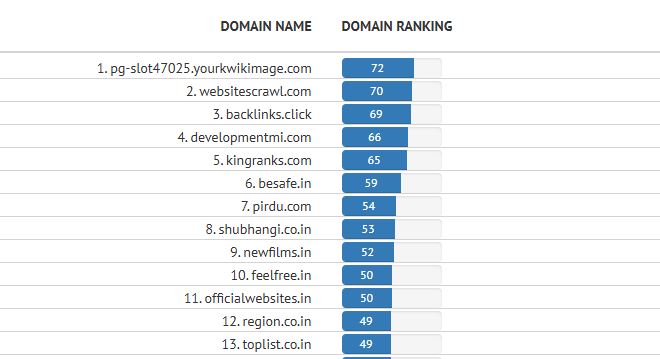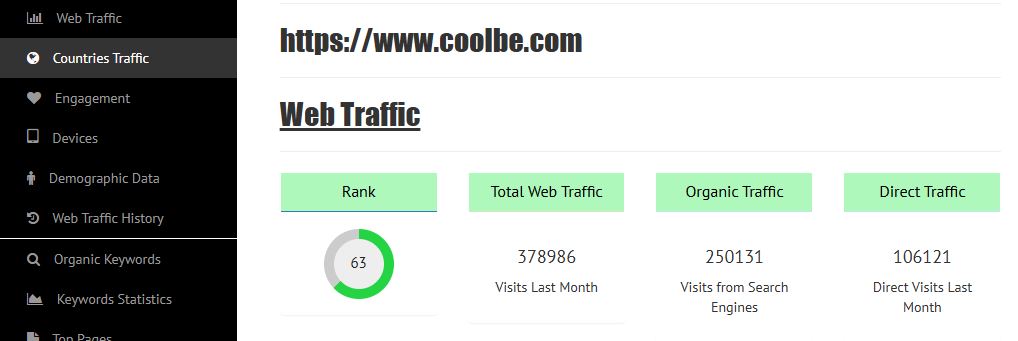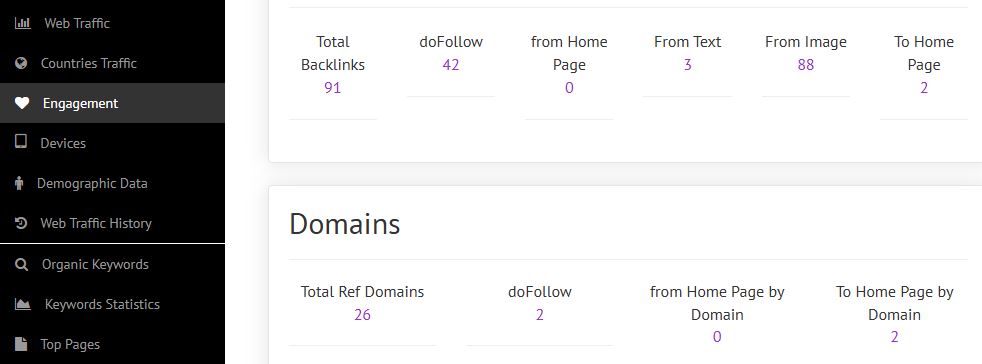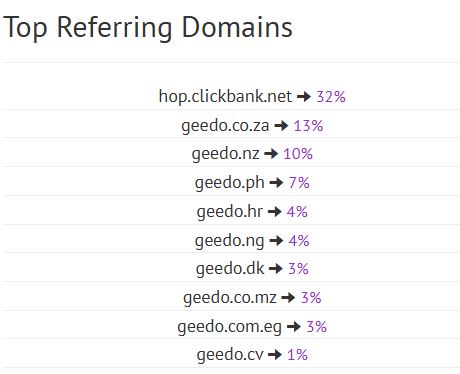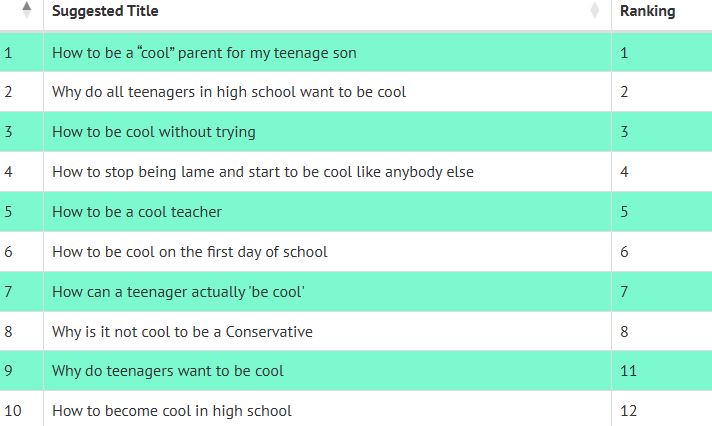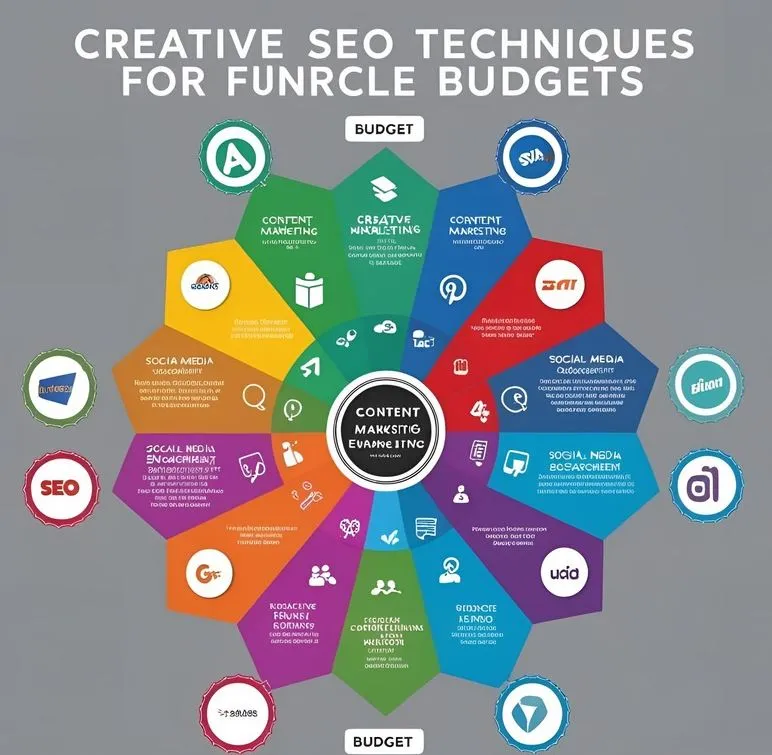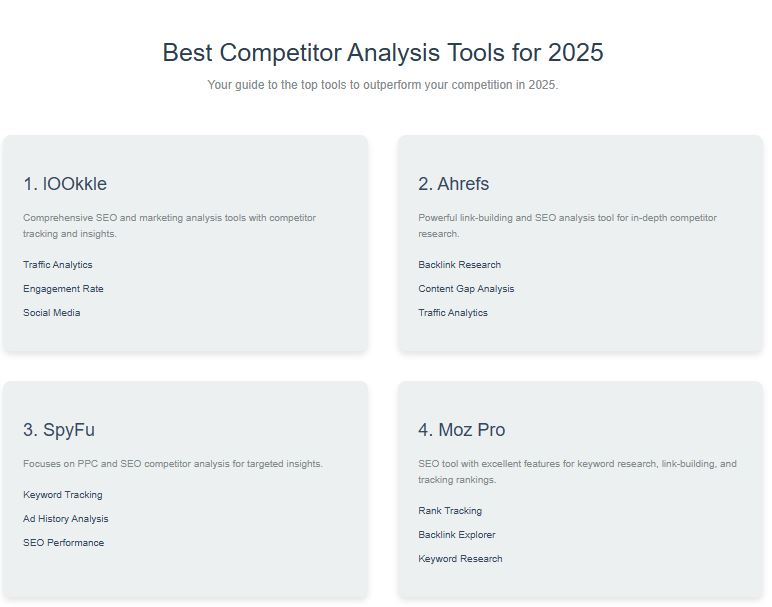
Competing for high-volume keywords within any search engine's search results is only an achievable goal for websites with massive domain authority and a ten-person content team. Ranking for "gaming PC" or "best laptop" is nearly impossible and expensive.
That's where long-tail keywords come in.
These longer, more specific search phrases are often overlooked, but they hold great potential. They're easier to rank for, generate higher revenue, and reflect clearer search intent. In fact, over 70% of search queries are long-tail and tend to tell users they're closer to taking an action, whether that's buying, signing up, or clicking.
But how do you find these hidden phrases?
That's where Lookkle's SEO Site Explorer comes in. This tool helps you discover the exact long-tail keywords your competitors are ranking for, filter them by difficulty and volume, and turn that information into content that drives results—without spending a dime on ads.
In this article, we'll walk you through:
- What long-tail keywords really are (with examples)
- How to find them with SEO Site Explorer
- How to create ranking content using them
- Real-life success stories without any ad spend
If you're a blogger, affiliate marketer, online store owner, or SEO beginner looking for smart, actionable growth, this is the guide for you.
What Are Long-Tail Keywords and Why Should You Care?
Long-tail keywords are extended, highly specific search phrases that typically consist of three or more words. Unlike broad or “head” keywords such as gaming pc or SEO tools, long-tail queries drill down into niche topics, user intent, and context.
Examples:
-
best portable mini pc for video editing -
how to improve INP on shared hosting -
free invoice templates in Excel for freelancers
These phrases may not attract thousands of monthly searches individually, but their conversion rates and ranking potential are significantly higher for three key reasons:
1. They’re Easier to Rank For
Long-tail keywords typically have:
-
Lower competition on Google
-
Less saturation in content
-
Fewer backlinks required to rank
This makes them ideal targets for new websites or blogs with limited authority.
Example: Competing for mini pc pits you against Amazon, Best Buy, and other giants. But fanless mini pc for home office use may have less competition—and still attract highly relevant traffic.
2. They Reflect High Search Intent
People who search long-tail phrases usually know exactly what they want:
-
“best noise-cancelling earbuds under $100” = purchase intent
-
“how to fix Core Web Vitals issues on WordPress” = solution-seeking
This means visitors who arrive via long-tail queries are more likely to take action, whether that’s buying, subscribing, or reading to the end.
3. They’re Perfect for Niche Sites and Small Businesses
If you’re not a huge brand, long-tail SEO is your secret weapon:
-
You avoid direct competition with enterprise-level domains.
-
You can create focused content that serves a small but dedicated audience.
-
You build authority one niche at a time.
Instead of trying to win a crowded race, you dominate the quieter roads—with higher return on effort.
How to Find Long-Tail Keywords Using SEO Site Explorer
Finding profitable long-tail keywords doesn’t have to be complicated or time-consuming especially when you have a focused tool like SEO Site Explorer by Lookkle. It lets you extract real, low-competition keyword data from your competitors and industry leaders in just a few clicks.
Here’s how to use it effectively:
Step 1: Analyze a Competitor or Industry Leader
Start by entering a competitor’s domain or a well-positioned URL into the Site Explorer search bar. The tool will analyze that page’s organic rankings and display a list of all the keywords it currently ranks for in Google.
For example, let’s say you're targeting the mini PC market. You can input a known eCommerce store selling these products.
You’ll instantly get keywords like:
-
budget mini pc for gaming -
mini pc for 4K video editing -
portable desktop pc 2025
These are real, data-backed long-tail keywords that your competitors are already ranking for—without needing to guess or brainstorm manually.
Step 2: Filter for Low-Competition, High-Intent Keywords
Once you have the list of keywords:
-
Set filters to show keywords with low difficulty (e.g., under 25)
-
Focus on moderate search volume (typically between 50–500/month)
-
Sort by ranking position if needed
This narrows the list to the most realistic, actionable opportunities for a newer or smaller site to rank with optimized content.
Pro tip: Look for keywords in position #5 to #20 on a competitor's site. These are easier to outrank with better content.
Step 3: Use the Related Keywords Feature
Lookkle Keyword Research Tool also suggests semantically related queries, giving you clusters of content ideas around your core topic. This is especially powerful for content planning and internal linking.
For example:
-
Input:
mini pc for gaming -
Related suggestions:
-
best fanless mini pc for streaming -
compact mini pc with Ethernet and SSD -
windows 11 mini pc under $500
-
You now have the basis for multiple blog posts, product pages, or tutorials, each targeting a specific search intent.
Step 4: Export and Plan Your Content Strategy
Once you’ve filtered and selected your keyword list:
-
Export them from Site Explorer to Excel file.
-
Group keywords into topic clusters for better SEO structure.
-
Prioritize based on difficulty, search volume, and business relevance.
Use this data to create:
-
Long-form articles
-
Niche landing pages
-
FAQ sections
-
Product descriptions optimized for search
How to Use Long-Tail Keywords in Your Content
Once you’ve found the right long-tail keywords with SEO Site Explorer and Keyword Research Tool, the next step is turning them into high-performing content. But using them effectively requires more than just stuffing them into paragraphs. It’s about intent-driven integration, content structure, and user experience.
Here’s how to do it right:
1. Match the Search Intent Perfectly
Every long-tail keyword represents a specific intent: informational, transactional, navigational, or comparative.
Examples:
-
how to install Windows 11 on a mini pc→ informational (tutorial) -
best fanless mini pc for home office→ commercial (buying guide) -
cheap mini pc with SSD and Ethernet→ transactional (product page)
What to do:
Before writing, ask: “What is the user really looking for when they search this?”
Then build your content around solving that exact problem, not just ranking.
2. Use the Keyword Naturally in Strategic Places
For on-page SEO and readability, place your long-tail keyword in:
-
Page title (ideally at the beginning)
-
Meta description
-
URL slug (short, readable, keyword-included)
-
H1 tag and at least one H2 subheading
-
First 100 words of your content
-
Image alt text, if applicable
-
Internal links pointing to or from the content
Avoid keyword stuffing. Use variations and synonyms naturally throughout the copy.
3. Create Dedicated, Focused Content Pages
Each long-tail keyword (or group of related ones) deserves its own targeted page:
-
Blog post
-
Product landing page
-
Tutorial
-
FAQ answer
Example: Instead of listing “best mini PCs” broadly, create pages like:
-
Best Mini PCs for Photo Editing in 2025 -
How to Choose a Mini PC for Video Conferencing
This increases topical relevance, improves SEO signals, and enhances UX by serving exactly what users searched for.
4. Build Internal Links Around Keyword Clusters
Long-tail keywords work best when used in content clusters:
-
One main article targets a broader phrase
-
Several supporting articles target related long-tail queries
-
All are internally linked
For example:
-
Hub article:
Ultimate Guide to Mini PCs for Remote Work -
Supporting articles:
-
Top Fanless Mini PCs for Quiet Offices -
Mini PCs with Dual HDMI for Multiscreen Setup -
Best Budget Mini PCs for Zoom Calls
-
This boosts authority, dwell time, and crawlability.
5. Use Schema Markup to Enhance Visibility
If your content answers questions, includes product info, or presents comparisons, add schema markup (e.g. FAQ, Product, HowTo). This helps your long-tail content appear in rich results, increasing visibility and CTR.
An example of schema markup in JSON-LD format for a review article titled “Top Fanless Mini PCs for Quiet Offices.” This snippet is SEO-optimized and can improve your visibility in rich snippets:
This should always be placed in the header of the website. For WordPress, there are plugins that automatically generate it alongside your blog posts.
<script type="application/ld+json">
{
"@context": "https://schema.org",
"@type": "Article",
"mainEntityOfPage": {
"@type": "WebPage",
"@id": "https://www.lookkle.com/blog/top-fanless-mini-pcs-quiet-offices"
},
"headline": "Top Fanless Mini PCs for Quiet Offices",
"description": "Discover the best fanless mini PCs that deliver silent performance for quiet office environments. Ideal for professionals who need powerful computing without the noise.",
"image": "https://www.lookkle.com/assets/img/blog/fanless-mini-pcs.jpg",
"author": {
"@type": "Organization",
"name": "Lookkle",
"url": "https://www.lookkle.com"
},
"publisher": {
"@type": "Organization",
"name": "Lookkle",
"logo": {
"@type": "ImageObject",
"url": "https://www.lookkle.com/assets/img/logo.png"
}
},
"datePublished": "2025-05-08",
"dateModified": "2025-05-08"
}
</script>
How AI Uses Long-Tail Keywords — and How to Make Yours Stand Out
Long-tail keywords are essential in the world of AI-generated content because they help models like ChatGPT, Gemini (Google), or Copilot (Microsoft) generate responses that are more specific, useful, and aligned with search intent.
How Do AI Models Use Long-Tail Keywords?
AI systems like ChatGPT or Gemini do not query search engines like Google or Bing in real time (unless browsing is enabled). However, these models are trained on large-scale datasets from the web — including indexed websites, blogs, FAQs, and forums. As a result:
-
Long-tail keywords that are well-optimized and well-represented online have a higher chance of influencing AI-generated answers.
-
When users ask a question that matches a long-tail keyword, the AI responds based on patterns it learned from web content containing similar phrases.
How to Increase Visibility of Your Long-Tail Keywords in AI Responses
1. Create content that answers real user intent
-
AI prefers content that directly solves problems or answers questions.
-
Example: Instead of “mini PC,” use “how to choose a mini PC for photo editing under $600.”
2. Use natural, question-based phrasing
-
Long-tail keywords framed as questions perform well in AI because users often ask full, conversational queries (e.g., “What’s the best silent mini PC for office use?”).
3. Write deep, structured content
-
Use subheadings, bullet points, FAQs, and summaries. AI tends to replicate structured answers.
-
Answer the “who, what, why, how” around each keyword.
Which Search Engines Influence AI Models?
1. Bing (used by ChatGPT & Copilot)
-
Microsoft integrates Bing with ChatGPT when browsing is enabled.
-
If your content ranks in Bing, it’s more likely to appear in real-time Copilot and ChatGPT (Pro) responses.
2. Google Search (used by Gemini / Bard)
-
Google’s Gemini is connected to Google Search and prioritizes well-ranked content.
-
Optimizing for Google means increased chances of influencing Gemini's generated content.
3. Others
-
Search engines like DuckDuckGo, Brave, or You.com have minimal influence on AI content generation.
How to Optimize Long-Tail Keywords for Both SEO and AI Visibility
-
Use semantic SEO: add variations, synonyms, and contextual keywords.
-
Add FAQ sections with question-style subheadings.
-
Aim for featured snippets by giving clear, concise answers.
-
Keep your content fresh: recent content is favored by both AI and search engines.
-
Ensure technical SEO best practices (clean structure, fast load, mobile-friendly).
Real Case Study: How bmpg289.com Improved Rankings Using Lookkle Tools
Website: bmpg289.com
Niche: Product reviews – electronics (mini PCs, portable gadgets, gaming accessories)
Goal: Increase organic traffic and visibility on Google for product-related long-tail keywords without a large SEO budget.
Step 1: Analyzing Your Site with SEO Site Explorer
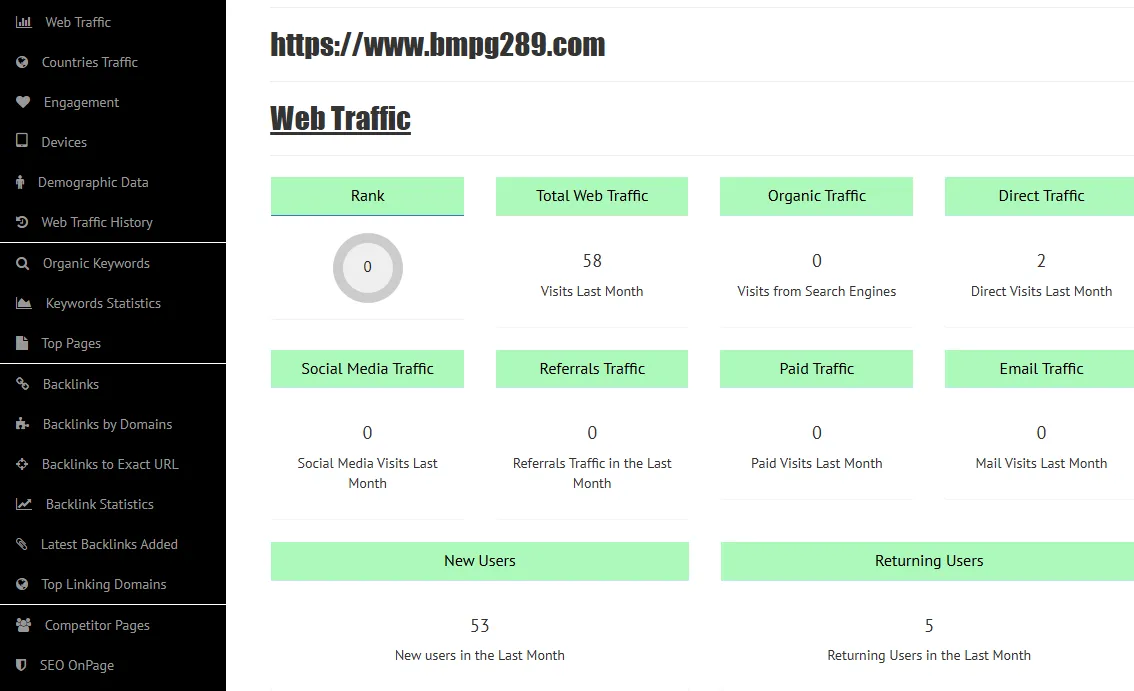
The team at bmpg289.com started by analyzing their own domain using the SEO Site Explorer to understand:
Organic traffic trends (they noticed stagnant growth over the past 3 months)
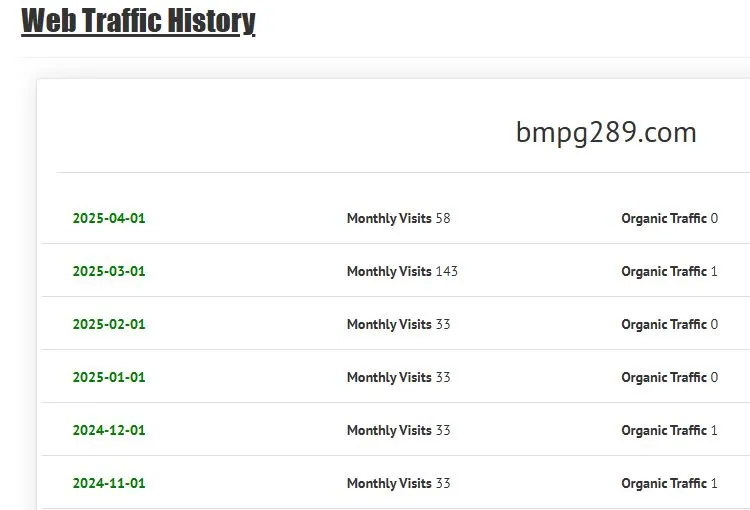
Low domain authority (still under 20)
Most visited pages: basic reviews with short content, lacking structured SEO
Very few referring domains (almost no backlinks)
Step 2: Discovering Top Competitors and Keyword Gaps
Currently, the main keyword for which this site (bmpg289.com) ranks best is "mp100 mini pc," as we saw in the "Organic Keywords" section of the SEO Site Explorer tool.
We can find some competitor sites by searching for this site's main keyword in Google, such as "mp100 mini pc."
We found some sites ranking on page 3 of Google, such as "coolbe.com," ranking for this keyword.
Let's analyze this site in depth with the SEO Site Explorer tool.
We verified that it is a very superior page, with a ranking of 63 and 250,131 visits in the last month from search engines, so it is a page with a lot of authority, which must have many positioned pages and a large number of backlinks.
In the backlink statistics section, we see that the site does not have a large number of backlinks:
Furthermore, backlinks are of little value:
We analyze the keywords for which it is ranking so well within the "Organic Keywords" section.
From its keywords, we notice that it's ranking first in Google for the keyword "cool be", essentially its domain name. Therefore, it's getting a good number of visitors, simply by looking at the number of monthly searches, since it ranks for each country because the site is optimized for different countries.
In other words, this page, with a 0 backlink ranking, has managed to rank very well for the keyword "cool be," primarily due to its matching domain name. Its competing pages, as can be seen on Google, are AliExpress and other similar pages related to baby strollers.
Step 3: Using Lookkle’s Title Generator Tool for Long-Tail Keywords
Bmpg289 will try to rank well for the keyword "cool be," considering that bmpg289 is related to electronic products, and ranking first won't be easy.
To do this, we search for titles related to this keyword to generate a series of articles promoting products of this type, and generate an entire category related to these products, thus gaining some authority. We will use the lookkle title generator tool.
Step 4: Creating SEO-Optimized Content Based on Long-Tail Keywords
The team created new content with:
-
Targeted titles
-
Detailed 1,200–1,500 word articles
-
Schema markup for Product, Review, and FAQ
-
Internal links between related reviews
-
Fast-loading pages with WebP images and lazy loading
-
Optimized meta descriptions and headings using long-tail phrases
Step 5: The Results (After 4 Weeks) (Waiting ...)
Tips on SEO and Online Business
Next Articles
Previous Articles


